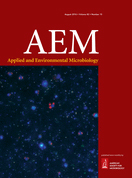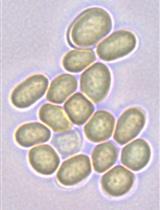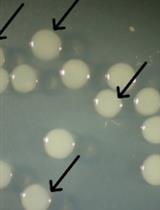- EN - English
- CN - 中文
Determination of Survival of Wildtype and Mutant Escherichia coli in Soil
野生型和突变型大肠埃希杆菌在土壤中的存活测定
发布: 2017年07月20日第7卷第14期 DOI: 10.21769/BioProtoc.2414 浏览次数: 8753
评审: Esteban Paredes-OssesAnonymous reviewer(s)
Abstract
E. coli resides in the gastrointestinal tract of humans and other warm-blooded animals but recent studies have shown that E. coli can persist and grow in various external environments including soil. The general stress response regulator, RpoS, helps E. coli overcome various stresses, however its role in soil survival was unknown. This soil survival assay protocol was developed and used to determine the role of the general stress response regulator, RpoS, in the survival of E. coli in soil. Using this soil survival assay, we demonstrated that RpoS was important for the survival of E. coli in soil. This protocol describes the development of the soil survival assay especially the recovery of E. coli inoculated into soil and can be adapted to allow further investigations into the survival of other bacteria in soil.
Keywords: Soil survival (土壤生存)Background
Escherichia coli is a Gram-negative, facultative anaerobe, belonging to the Enterobacteriaceae family, which inhabits the intestinal tract of humans, warm-blooded animals and reptiles (Berg, 1996; Gordon and Cowling, 2003). It can be transferred through water and sediments via faeces and is used as an indicator of faecal contamination in drinking and recreational water. The use of E. coli as a faecal indicator is based, at least in part, on the assumption that it exists transiently outside of the host gastrointestinal tract (Ishii and Sadowsky, 2008) and does not survive for a long time in the external environment. However, several studies have isolated E. coli from various natural environments such as municipal wastewater, freshwater, beach water, beach sand and soils (Jiménez et al., 1989; Brennan et al., 2010; Chiang et al., 2011; Byappanahalli et al., 2012; Zhi et al., 2016). The capacity of these E. coli strains to survive for long periods of time and grow in the external environment raises questions about the validity of its continued use as indicator of water quality (Brennan et al., 2010). To understand the genetic mechanism underlying the survival and persistence of E. coli in soil, we developed a soil survival assay to evaluate the role of the different genetic factors on soil survival. We investigated the role of the general stress response regulator, RpoS, in the survival of long-term soil persistent E. coli in soil. The ability of the rpoS mutant (COB583ΔrpoS) to survive in soil was compared with the wildtype strain (COB583) and RpoS was demonstrated to be important for the survival and long-term persistence of E. coli in soil (Somorin et al., 2016). Here, we present the detailed protocol for the soil survival assay and the recovery of E. coli from soil.
Materials and Reagents
Note: All reagents used were from the specified manufacturers (catalog numbers indicated). Nonetheless, the same reagents from different manufacturers are expected to produce similar results.
- Spatula
- Weighing boat (Sparks Lab Supplies, catalog number: BAL1822 )
- Gloves (Sparks Lab Supplies, catalog number: SAF5534X20 )
- Sterile micropipette tips (100-1,000 µl) (Abdos Labtech, catalog number: P10102 )
- Sterile micropipette tips (2-200 µl) (Abdos Labtech, catalog number: P10101 )
- Microcentrifuge tube (1.5 ml) (Abdos Labtech, catalog number: P10202 )
- Centrifuge tube (15 ml graduated) (Abdos Labtech, catalog number: P10402 )
- Cuvette (LP ITALIANA, catalog number: 112117 )
- 2 mm laboratory test sieve (B5410/1986, Endecotts, catalog number: 200SIW2.00 )
- 96-well plate (TC microwell 96U) (Thermo Fisher Scientific, Thermo ScientificTM, catalog number: 163320 )
- 90 mm Petri dishes (Abdos Labtech, catalog number: P10901 )
- Silty-Loam soil
- E. coli strains
- E. coli COB583 (Somorin et al., 2016)
- E. coli COB583ΔrpoS (Somorin et al., 2016)
- E. coli COB583 (Somorin et al., 2016)
- Luria-Bertani (LB) broth (Sigma-Aldrich, catalog number: L3022-1KG )
- Agar No. 2 (Lab M, catalog number: MC006 )
- MacConkey agar (Sigma-Aldrich, catalog number: M7408 )
- Distilled water (Milli-Q) (EMD Millipore)
- Phosphate buffered saline (PBS) (Sigma-Aldrich, catalog number: P4417-100TAB )
- LB broth (see Recipes)
- LB agar plates (see Recipes)
- PBS buffer (see Recipes)
- MacConkey agar plates (see Recipes)
Equipment
- 250 ml conical flask (VWR, catalog number: 214-1132 )
- -80 °C freezer
- Styrofoam 15 ml tube holder
- Bunsen burner
- Orbital shaker (Gallenkamp)
- Discovery comfort multichannel pipette (20-200 µl; HTL)
- Discovery comfort multichannel pipette (5-20 µl; HTL)
- Nichipet EX pipette (200-1,000 µl; Nichiryo)
- Nichipet EX Pipetman classic pipettes (20-200 µl; Nichiryo)
- Vortex mixer (Reax top; Heidolph)
- Biomate 3 spectrophotometer (Thermo Fisher Scientific, catalog number: 335904 )
Note: This product has been discontinued.
- Weighing scale (Sartorius, catalog number: BL120S )
Note: This product has been discontinued.
- Centrifuge (Eppendorf, model: 5418 )
- Labo autoclave (SANYO, model: MLS-3020U )
Procedure
文章信息
版权信息
© 2017 The Authors; exclusive licensee Bio-protocol LLC.
如何引用
Somorin, Y. and O'Byrne, C. P. (2017). Determination of Survival of Wildtype and Mutant Escherichia coli in Soil. Bio-protocol 7(14): e2414. DOI: 10.21769/BioProtoc.2414.
分类
微生物学 > 微生物生理学 > 适应
微生物学 > 微生物细胞生物学 > 细胞活力
您对这篇实验方法有问题吗?
在此处发布您的问题,我们将邀请本文作者来回答。同时,我们会将您的问题发布到Bio-protocol Exchange,以便寻求社区成员的帮助。
Share
Bluesky
X
Copy link













